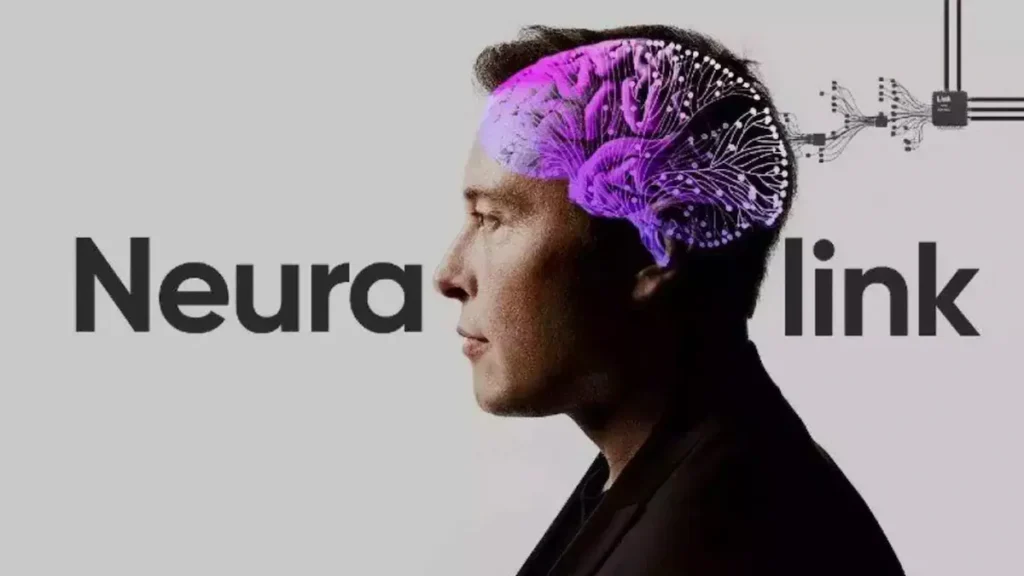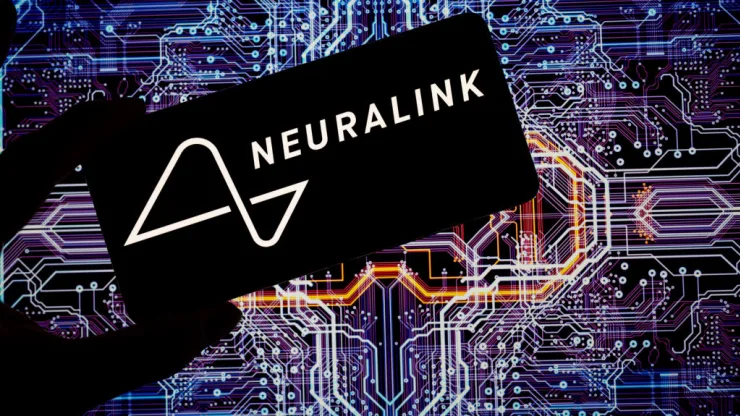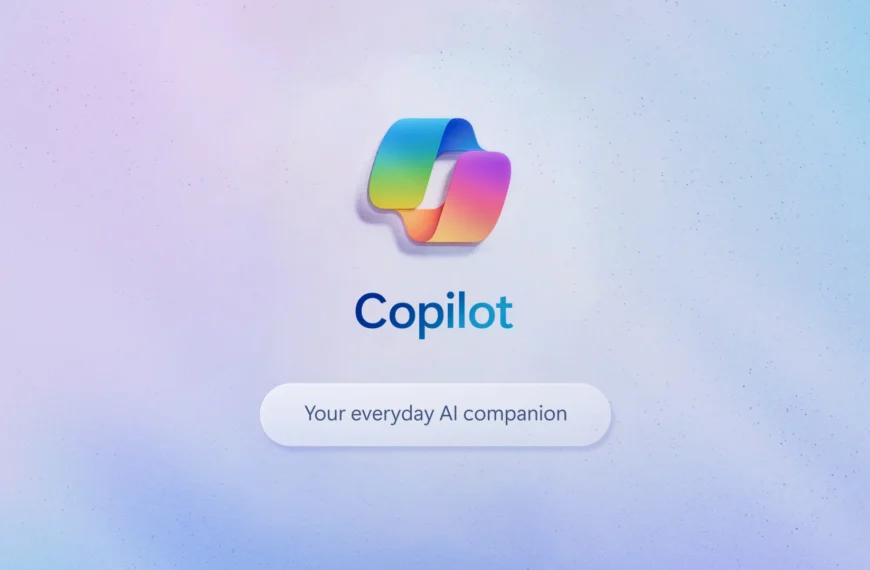
Neuralink, spearheaded by Elon Musk, emerges as a pioneering force in the neurotechnology realm, aiming to meld the human brain with cutting-edge technology through an implantable brain-machine interface device. With the mission to restore autonomy for individuals facing unparalleled medical challenges and to broaden the horizons of human potential, Neuralink stands at the frontier of bridging minds and machines, embodying the essence of the story of Neuralink within the expanding landscape of artificial intelligence (AI).
As we unravel the journey of Neuralink, from its inception to the cutting-edge developments and the anticipated milestones ahead, we delve into the intricate tapestry of innovation and debate entwined within its evolution. This article charts the course of Neuralink’s ambitious project, examining its foundational vision, the technological breakthroughs achieved & the steps toward human trials, and the groundbreaking implications for medical science. Each phase in Neuralink’s story not only reflects a leap towards realizing Elon Musk’s vision of a symbiotic future but also prompts crucial ethical deliberations and anticipates future prospects and challenges in seamlessly integrating AI with the human experience.
Founding and Vision
Neuralink was established by Elon Musk in 2016, driven by a vision to integrate advanced brain-computer interfaces (BCIs) into medical science and human enhancement. The core mission at its inception was to develop devices that could potentially revolutionize treatments for severe brain and spinal cord injuries. With an impressive funding of $158 million, of which $100 million was personally contributed by Musk, the company solidified its financial foundation to pursue these innovative technologies.
The company’s ambitions are twofold. In the short term, Neuralink focuses on addressing critical brain and central nervous system ailments. The initial applications aim to assist individuals paralyzed by severe injuries, enabling them to regain communication abilities and, eventually, motor, sensory, and visual functions. Looking towards the future, the company envisions a world where humans can achieve a symbiotic relationship with artificial intelligence. This long-term goal seeks not only to prevent humans from being outpaced by AI developments but also to foster an unprecedented integration of human cognitive abilities with machine intelligence.
At its core, Neuralink is developing a brain-machine interface (BMI) that could become a pivotal platform in medical science and beyond. This technology aims to allow direct communication between the human brain and external devices, offering hope not just for restoring lost functions but also for enhancing human capabilities in ways previously imagined only in science fiction. By situating its headquarters in Fremont, California, and led by CEO Jared Birchall, Neuralink positions itself at the forefront of neurotechnological innovation, seeking to push the boundaries of what is possible in the interface between the human brain and machines.
Key Technologies Developed
Neuralink has made significant strides in developing advanced brain-computer interfaces (BCIs) that could revolutionize how humans interact with technology. At the core of these innovations is the Neuralink device, designed to interpret brain signals, enabling users to control digital devices such as phones or computers merely through thought. This device incorporates a sophisticated array of 1,024 electrodes distributed across 64 threads, each thinner than a human hair, to sit delicately within the brain’s tissue. These threads are crucial for the precise transmission and reading of neuronal data, allowing for real-time interaction with connected technology.
The surgical precision required to implant these threads is managed by a specially designed robotic system. This robot, integral to the Neuralink procedure, inserts the flexible threads into the brain with minimal invasiveness and high accuracy. The system is akin to a “sewing machine,” designed to handle the ultra-thin threads that are about 4 to 6 μm in width, making the installation process as safe and efficient as possible. Once implanted, these threads connect to the Neuralink N1 Implant, a coin-sized neural chip housed under the skull. This implant is a key component of the system, equipped with electrodes that not only record but also emit electrical currents, facilitating both monitoring and stimulation of brain activity.
The N1 Implant is a pinnacle of integration between biology and technology, featuring a biocompatible enclosure that withstands harsh physiological conditions and a battery that charges wirelessly, ensuring user convenience and safety. The implant works in conjunction with a companion app, enhancing user interaction by enabling control of a computer cursor or keyboard through thought alone. This system represents a significant leap towards enhancing human cognitive abilities and processing speed by creating a direct interface between the human brain and digital devices. Neuralink’s technologies are not only pioneering in the field of neurotechnology but also hold the potential to transform the treatment of neurological diseases and injuries, marking a new era in medical science and human-machine symbiosis.
First Animal Trials
Neuralink’s initial experiments involved the precise implantation of ultra-thin, thread-like electrodes into the brains of rats and monkeys, marking a significant step in brain-computer interface technology. In these early trials, the device implanted in rats was able to record single neuron activity with notable precision and accuracy. For monkeys, the technology went a step further; it stimulated neural activity that controls hand movements, enabling the monkeys to manipulate a computer cursor solely through their thoughts.
The surgical procedure and the subsequent monitoring revealed no adverse effects during or immediately after the implantation in both animal subjects, which underscored the potential safety and efficacy of the Neuralink device. This aspect was crucial in demonstrating the device’s capability for safe removal, ensuring that the brain tissue remained undamaged.
Moreover, these animal trials have not only proven the technical viability of Neuralink’s brain-computer interfaces but also set a foundational stage for future applications aimed at treating serious neurological conditions such as paralysis and blindness. In a broader demonstration of this technology, Neuralink showcased a live test on pigs in August 2020, successfully recording and transmitting neural signals, thus highlighting the system’s potential to advance medical science.
Human Trials & FDA Approval

FDA Approval and Trial Launch
Neuralink received approval from the US Food and Drug Administration (FDA) in May 2023 to commence human trials, marking a significant milestone for the company. This approval allowed the initiation of the PRIME Study, an investigational medical device trial focusing on the safety and functionality of Neuralink’s brain-computer interface (BCI). The study aims to assess the N1 implant and the R1 surgical robot, particularly their ability to enable individuals with paralysis to control external devices using their thoughts. The first human subject was implanted with the device in late 2023, showing promising results in detecting neuron spikes, an essential step towards achieving the trial’s goals.
Study Design and Participant Involvement
The PRIME Study is structured to include a comprehensive evaluation over several years. Initially, participants will undergo nine visits in an 18-month phase, followed by a more extended period involving 20 visits over five years. Each participant, suffering from conditions like quadriplegia due to spinal cord injuries or ALS, will engage in two one-hour BCI Research Sessions weekly, which are crucial for gathering consistent data on the interface’s performance.
Ethical and Regulatory Challenges
Despite the groundbreaking potential of Neuralink’s technology, the company has faced criticism regarding its transparency and ethical practices. Critics have pointed out the absence of the clinical trial’s registration on ClinicalTrials.gov, a standard procedure for ensuring transparency and accountability in biomedical research. This omission raises concerns about the adherence to ethical guidelines, such as those outlined in the Declaration of Helsinki, which advocates for the public registration of clinical studies. Furthermore, the high mortality rate among animals used in earlier tests and potential issues related to the exploitation of sensitive medical data and societal inequalities have also been subjects of ethical scrutiny.
First Human Trial Participant

Neuralink’s inaugural human trial participant, Noland Arbaugh, has been paralyzed from the shoulders down for eight years. Arbaugh underwent a transformative procedure where a Neuralink device was surgically implanted into his brain, marking a significant milestone in the intersection of technology and human capability. This device, designed to read neural signals, has enabled Arbaugh to control a computer cursor solely with his thoughts, showcasing the practical applications of this groundbreaking technology.
Arbaugh’s experience post-surgery has been notably positive. He reported that the surgery was straightforward and he has not encountered any cognitive impairments since the implantation. His ability to engage with technology has been dramatically enhanced; he can now operate a computer and play complex strategy games like online chess and Civilization just by thinking about the moves he wants to make. This capability extends to everyday digital interactions, as Arbaugh can also control a computer mouse using his thoughts, demonstrating the device’s potential to restore independence to individuals with severe mobility restrictions.
Despite these promising developments, the updates provided by Elon Musk on Neuralink’s progress have faced criticism for insufficient detail, raising questions about the transparency of the trial’s ongoing results and its broader implications. Nonetheless, the primary function of Neuralink’s device—to enable control of external devices through thought—is a testament to its potential therapeutic applications, which could eventually include treatments for conditions such as blindness, paralysis, and depression.
The Role of Neuralink in Medical Science
Neuralink’s innovative brain-computer interface (BCI) technology holds transformative potential for the field of medical science, particularly in treating neurological disorders and enhancing human capabilities. One of the most immediate applications is in neuroprosthetics, where individuals suffering from paralysis or amputations could control robotic limbs or exoskeletons directly with their thoughts. This technology not only aims to restore mobility but also enhances the quality of life for those affected by severe physical disabilities.
Furthermore, Neuralink’s BCI technology extends its benefits to individuals with neurodegenerative diseases such as Parkinson’s and Alzheimer’s. By establishing a direct link between the brain and external devices, Neuralink facilitates early detection and more accurate diagnosis of these conditions. This capability could lead to more personalized and effective treatments, potentially slowing disease progression and improving patient outcomes. Additionally, for those with severe communication barriers, such as locked-in syndrome, Neuralink offers a groundbreaking solution by enabling communication through thought alone, thus providing a voice to those who are otherwise unable to express themselves.
The broader implications of Neuralink’s technology in neurosurgery and cognitive science are equally profound. By enabling precise monitoring and stimulation of brain activity, researchers can gain deeper insights into cognitive processes and consciousness. This could pave the way for novel therapies and treatments for a range of neurological disorders, further advancing our understanding of the human brain and its complex functions.
Criticism and Ethical Considerations
Ethical and Privacy Concerns
Some researchers are wary of the ethical implications of Neuralink’s human trials, particularly the company’s lack of transparency and the potential risks to participants. Concerns about data security are significant, with fears that the data collected by Neuralink devices could be misused, leading to breaches and privacy violations. Moreover, the ethical risks of brain-computer interface technology extend beyond Neuralink, as other companies also develop similar technologies that could threaten mental privacy and enhance authoritarian surveillance.
Health Risks and Societal Implications
The potential health risks associated with Neuralink’s technology include infection, inflammation, and other complications, which are serious considerations for any implantable device. Additionally, the technology’s high cost raises concerns about accessibility and equity, potentially exacerbating health disparities. Philosophical debates also emerge regarding the implications of human enhancement technologies, which could lead to a stratified society divided by cognitive and sensory capabilities.
Regulatory and Animal Welfare Issues
The need for stringent regulation of commercial neurotechnology is highlighted by the unregulated nature of this field, raising social, legal, and ethical questions about privacy, access, and freedom of thought. Neuralink has also been criticized for its treatment of animals in experiments, with reports of severe distress and high mortality rates among test subjects. These issues underscore the importance of transparency and adherence to ethical standards in the development and implementation of neurotechnologies.
Future Prospects and Challenges

Neuralink’s journey into the future is paved with both groundbreaking potential and significant challenges. With a substantial $205 million in series C funding, the company is well-equipped to advance its brain-computer interface (BCI) technologies. However, the departure of cofounder Max Hodak and his subsequent investment in a rival company, Synchron, highlights a competitive landscape that could influence Neuralink’s strategic directions.
Regulatory hurdles present another critical challenge. Recent FDA inspections have raised concerns about Neuralink’s record-keeping and quality controls, particularly in their animal labs. These issues, noted during a June 2023 inspection, included problems with calibration records and a lack of necessary approvals on study reports, which could delay future commercial approvals. The severity of these findings has yet to be fully determined by the FDA, but they underscore the importance of stringent quality assurance in Neuralink’s operations.
On the technological front, Neuralink continues to explore the vast potential of BCIs. Future applications could dramatically transform human interaction with technology by enabling direct brain-to-device connections, thus eliminating the need for physical interfaces in tasks like typing or controlling artificial limbs. Moreover, the potential for BCIs to augment brain functions, such as memory and learning speed, opens up futuristic possibilities that were once confined to science fiction. These advancements could lead to revolutionary treatments for disabilities and enhance human capabilities, aligning with Musk’s vision of achieving a symbiotic relationship between humans and artificial intelligence.
Conclusion
Throughout this exploration of Neuralink’s journey in the AI world, we’ve witnessed the remarkable strides made by Elon Musk’s pioneering venture. From its ambitious inception aimed at integrating advanced brain-computer interfaces (BCIs) for enhancing human capabilities and treating neurological disorders, to the crucial milestones achieved in technology development and human trials, Neuralink encapsulates the dynamic interplay between ethics, innovation, and the future of medical science. The progression from animal experiments to the groundbreaking first human trial participant illustrates not only the potential to revolutionize our interaction with technology but also the complex ethical discussions such pioneering technology inevitably attracts.
As Neuralink continues to navigate both the possibilities and challenges of integrating AI with human cognitive processes, it stands on the cusp of altering our understanding of human potential. The advancements in neurotechnology promise a new horizon for those with medical disabilities while opening debates on ethical standards, privacy, and the equitable distribution of such technologies. While the journey is fraught with both scientific and moral complexities, Neuralink’s endeavor into merging the human brain with AI sets a precedent for the future, heralding a realm of possibilities that could redefine the essence of human experience and capabilities in an interconnected world.
FAQs
Does Neuralink Incorporate Artificial Intelligence?
Neuralink, a company initiated by Elon Musk, integrates artificial intelligence with human brain capabilities. The company is focused on developing an implantable device that would be placed within the brain to monitor and possibly stimulate brain activity, aiming for a harmonious integration of human cognitive functions with AI technologies.
What is Neuralink’s Background?
Founded in 2016 by Elon Musk, Neuralink is a neurotechnology firm dedicated to creating an advanced brain-computer interface. This futuristic device is designed to convert thoughts into actions, offering hope for restoring motor functions to individuals with paraplegia and potentially returning sight to those who are congenitally blind.
How Could Neuralink Potentially Transform Our World?
Neuralink’s pioneering technology might drastically alter our interaction with the surrounding environment. By establishing a direct connection between the human brain and external devices, it opens up unprecedented possibilities and capabilities, venturing into what was previously considered the domain of science fiction.
Is Neuralink Developing a Cure for Blindness?
Yes, one of Neuralink’s ambitious projects includes Blindsight, a chip designed to cure blindness. Elon Musk announced in 2023 that this groundbreaking technology could be expected to be ready in the coming years. This initiative is part of Neuralink’s broader goal to facilitate direct communication between the brain and electronic devices, particularly for individuals who have lost their neurological connections to their bodies.
References
[1] – https://www.ncbi.nlm.nih.gov/pmc/articles/PMC8083990/
[2] – https://en.wikipedia.org/wiki/Neuralink
[3] – https://neuralink.com/
[4] – https://www.vox.com/future-perfect/23899981/elon-musk-ai-neuralink-brain-computer-interface
[5] – https://research.contrary.com/reports/neuralink
[6] – https://builtin.com/hardware/what-is-neuralink
[7] – https://www.rgare.com/knowledge-center/article/advances-in-neurotechnology-poised-to-impact-life-and-health-insurance
[8] – https://www.crunchbase.com/organization/neuralink
[9] – https://www.wired.com/story/neuralink-implant-first-human-patient-demonstration/
[10] – https://www.wired.com/story/neuralink-brain-implant-elon-musk-transparency-first-patient-test-trial/
[11] – https://www.reuters.com/technology/what-does-elon-musks-brain-chip-company-neuralink-do-2022-12-05/
[12] – https://www.businessinsider.com/neuralink-elon-musk-microchips-brains-ai-2021-2
[13] – https://pitchbook.com/profiles/company/179115-22
[14] – https://www.bloomberg.com/profile/company/1534091D:US
[15] – https://www.reuters.com/science/elon-musks-neuralink-gets-us-fda-approval-human-clinical-study-brain-implants-2023-05-25/
[16] – https://www.axios.com/2024/01/30/elon-musk-neuralink-brain-chip-human-trial
[17] – https://neuralink.com/blog/first-clinical-trial-open-for-recruitment/
[18] – https://www.fastcompany.com/91029453/unpacking-the-ethical-issues-swirling-around-neuralink
[19] – https://www.reuters.com/technology/musks-neuralink-faces-federal-probe-employee-backlash-over-animal-tests-2022-12-05/
[20] – https://www.forbes.com/sites/roberthart/2024/02/26/experts-criticize-elon-musks-neuralink-over-transparency-after-billionaire-says-first-brain-implant-works/
[21] – https://newatlas.com/computers/neuralink-first-human-trial/
[22] – https://www.linkedin.com/pulse/road-ahead-neuralink-navigating-challenges-embracing-ramalingam-so12c
[23] – https://www.trtworld.com/science-and-tech/elon-musks-neuralink-dilemma-decoding-minds-challenging-ethics-15237706
[24] – https://www.pcrm.org/news/news-releases/physicians-committees-statement-neuralink-reportedly-receiving-approval-human
[25] – https://www.theverge.com/2023/9/19/23880861/neuralink-human-clinical-trial-n1-implant
[26] – https://www.linkedin.com/pulse/revolutionizing-healthcare-exploring-impact-neuralink
[27] – https://www.linkedin.com/pulse/future-our-minds-elon-musk-neuralink-brain-chip-dickinson-mnzm–8hrtf
[28] – https://www.nature.com/articles/d41586-024-00304-4
[29] – https://www.vox.com/future-perfect/2022/12/11/23500157/neuralink-animal-testing-elon-musk-usda-probe
[30] – https://www.cnbc.com/2024/02/29/musks-neuralink-brain-implant-company-cited-by-fda-over-animal-lab-issues.html







Leave a Reply